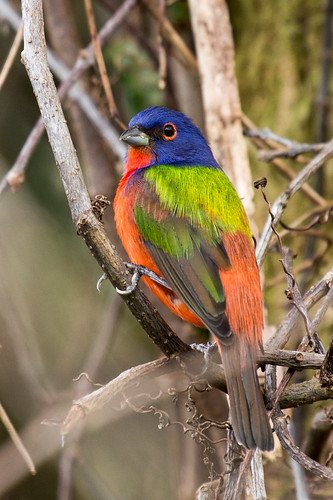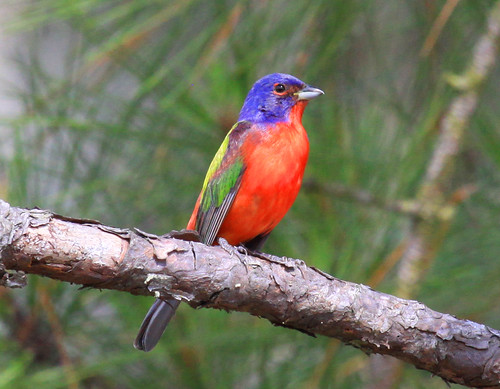I took two ornithology classes in the mid-1970s, taught by two different ornithologists who were using two different ornithology textbooks. And in both classes I was taught as fact that virtually no birds have a sense of smell with the exceptions of Turkey Vultures and one or two oceanic birds. As I recall, in both classes that supposed lack of a sense of smell turned up on at least one exam question, so this wasn’t just a fact—it was an important fact.
The intriguing thing was that I learned in at least one of those classes that bird brains do have a section corresponding to the olfactory center of mammal brains, but this was explained away as serving a so-far unknown function. Birds obviously lack a nose, a conspicuous organ in most mammals, but they do have nostrils, and considering that all manner of non-avian animals, from invertebrates and fish through mammals, are able to recognize scents that could affect their survival, as food to move toward or as dangers to avoid, it did seem peculiar that birds would inexplicably lose this capacity. Sure, flight requires them to be as streamlined as possible, but it’s not like their brains lost the weight of that olfactory center. Even though it seemed odd, I didn’t question it. Many “For the Birds” transcripts from the 1980s reflect that.
Then, in 1991, a group of researchers published a paper in The Auk, the journal of the American Ornithologists’ Union (now the American Ornithological Societies) titled “Odor Detection Thresholds in Tree Swallows and Cedar Waxwings,” and that apparently got the ball rolling.
 |
| Having a sense of smell may help waxwings detect when some berries start fermenting. |
In Jennifer Ackerman’s wonderful new book, The Bird Way, she gives an excellent overview about what we now know about birds’ ability to smell, including disturbing information about how many oceanic birds detect dimethyl sulfide. That familiar sulfury, briny odor that we associate with the seashore and oysters on the shell is emitted when krill devour phytoplankton. This gives albatrosses and other “tubenoses” valuable information about where food is, but that specific odor is also emitted as plastics degrade, explaining why so very much plastic is consumed by albatrosses and fed to their young—Ackerman calls this plastic trash floating on the ocean “an olfactory booby trap for seabirds.”
 |
| This is the tragic result when parent albatrosses smell out and feed their young plastics as food. |
In recent years, people have also come to reckon with the exquisitely keen vision of birds, including their capacity to see in the ultraviolet range. Ackerman understands that birds experience a world far, far more complex than we humans can possibly perceive. I’ve seen online photos ostensibly depicting how birds see the world, showing the same colors we see only with the eerie purplish pink sheen that we mere humans associate with ultraviolet light. But to my delight, Ackerman doesn’t try to oversimplify bird vision like that. She writes, “Birds see a massive spectrum of color our brains are simply incapable of processing.” She spent time with Princeton’s Mary Caswell Stoddard, who studies avian color vision. Stoddard told her, “It’s not just that they can see wavelengths of colors in a part of the spectrum we can’t see. It’s that ultraviolet light is a fundamental part of many colors they perceive. They’re experiencing another whole dimension of color—all the colors we can see, with varied amounts of UV mixed in. So it’s not simply human vision plus some purplish UV colors. It’s a complete reimagining of the color experience.” She gives the example of the Painted Bunting. “The bunting’s back is a spectacular shiny green color. When you put the spectrophotometer on the green back of the bunting, there’s a green peak, showing that green wavelengths are being reflected, which is what we’re seeing. But there’s also a huge ultraviolet peak that we’re completely missing. To a bird, the green back of the painted bunting looks UV green, which isn’t green at all but a totally different color that we can’t even fathom.”
Ackerman’s book is filled with these humbling insights about avian senses. From start to finish, *The Bird Way* is a joy to read, and I’m barely scratching the surface of its many delights. Tomorrow I’ll focus on her discussion of bird play.

